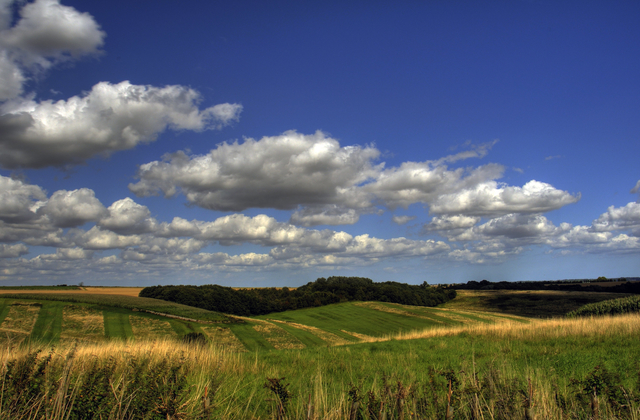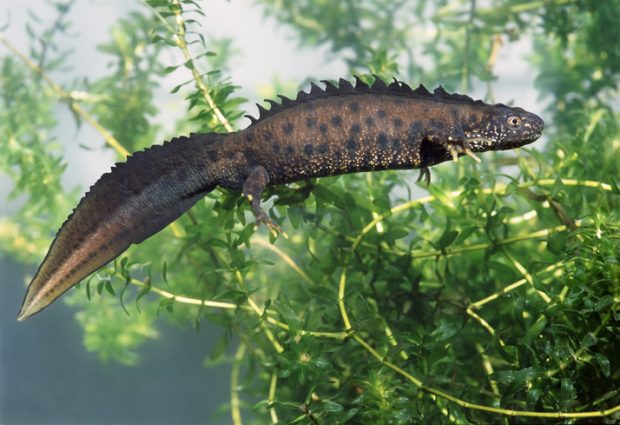Mel Hughes, Natural England's Sustainable Development Programme Director welcomes government's ambitions for greener building under #ProjectSpeed.
It is clear from recent reports such as the Dasgupta review that a healthy economy is reliant in the long-term on a healthy environment, whether that's nature-based solutions to achieving net zero targets, green spaces for our health and well-being or the habitats and species that make our country biodiverse.
It is therefore vital that as a nation, that we account for these environmental benefits in our decision making - whether that’s economically or socially driven - environmental regulations and policies play a valuable role in enabling these, however onerous they may feel at times. That's not to say that there aren’t improvements to be made or changes in the way these are carried out - far from it in fact.
Natural England's District level licensing (DLL) scheme for great crested newts (GCN) is one example of how a fresh look at the relationship between species needs and the growth agenda might achieve more harmony. This scheme for protected species licensing is one that illustrates our ambition to find ways to work with development, at a landscape-scale, in order to restore nature and not merely slow its rate of loss. This all starts with having clarity over design - both the conservation vision and the development plan - supported by a high-quality evidence base.

Our new approach to GCN rethinks how investment in a licensing regime can more strongly restore nature and secure long-term management, whilst providing clarity and certainty to those seeking to develop. Under the traditional approach, developers who want to build on land which is home to GCN must trap and relocate the species before starting work. As highlighted in the media this week, seasonal restrictions can also lead to delays and create uncertainty over the costs and scheduling of planned development. DLL offers an alternative approach. Developers make a fixed price conservation payment based on the predicted impact of their development which covers the creation or restoration of four times the number of ponds impacted by development. New habitat is provided in areas which are known to represent the best places for newts to thrive, so the scheme strengthens the whole population.
New habitat created will be maintained and monitored for 25 years - all funded by the initial developer payment. That is all great for the newts, but it works also for the developer, who can operate with a known budget plan and is not subject to any seasonal or permitting delays. This is regulation achieving its purpose.

What is key to our new licensing approach is a) a sound evidence base (we have undertaken the largest survey of its type across England using complimentary new (eDNA) and traditional (habitat survey) approaches over the last 3 years, funded by MHCLG) and b) upfront habitat provision to offset development impacts (so far DLL schemes have collectively delivered over 500 newly created or restored ponds for GCN, and more than 500 are planned for this next year to meet developer demand). This makes DLL the quick, simple and easy option for developers, as well as focussing conservation effort where it will be of maximum benefit to the species.
Natural England is working hard to make this new licensing option for GCN available in more places across England. DLL is currently available across 69 local authorities and we hope to increase this to around 100 local authorities by the end of September. By the end of the year, DLL will be in place across 150 LPAs. It's a growing scheme, in familiarity within the sector and take-up by developers, which remains secure in the wake of COVID-19. Whilst many species surveys have been limited during the lockdown period, DLL has been notably unaffected.
Natural England sees a more strategic approach to some our legally protected species as a key route to securing greater outcomes like this. Over the next year we will be exploring which species might be benefited through a more strategic approach to licensing - and in partnership with experts and practitioners - how this might be achieved. This is not a simple lift and shift of DLL but a more considered, bespoke approach.
This is especially important where we consider the considerable variation and complexity within these species. Furthermore, we can see this approach helping us design conservation strategies that go well beyond species licensing work. Our broader vision is for local strategic plans (Local Nature Recovery Strategies) into which funds from multiple sources - licensing, agri-environment, net gain and others - can all be focused in a coherent manner, delivering resilient nature, carbon and water services.
Through 'Project Speed' and initiatives such as #biodiversity gains and green infrastructure standards we’ll bring our expertise to ensure new developments are built greener from the outset.
3 comments
Comment by Christina Williams posted on
I applaud these DLLs but I am surprised by how complex your language is and therefore how difficult it was to understand the message. This will turn off potential allies.
Comment by BS posted on
'Project speed' - great title, particularly given the way it has been rushed in without properly engaging those who are most knowledgeable about gcn.
You also forgot to add the info to clarify that these schemes have begun without actually any idea of what 'favourable conservation status' for great crested newts is. I don't call that a sound evidence base, Also that the payment allows the killing of any newts that have the misfortune to be present on one of these development sites, and remind me, how long is the replacement habitat provision secure for?
Comment by udayavani english posted on
nice article